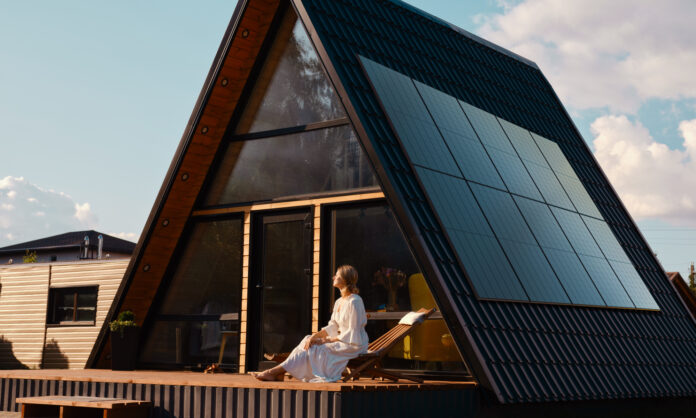Introduction
In the evolving landscape of sustainable energy, community solar stands as a beacon of collective progress and inclusivity. It empowers individuals and communities to tap into renewable energy generation without the necessity of individual installations, paving a pathway towards environmental stewardship and energy self-sufficiency. This introduction embarks on an exploration of community solar’s pivotal role within the energy sector, highlighting its capacity to democratize clean energy access across diverse demographics.
Understanding Community Solar
The U.S. Department of Energy defines community solar as any solar project or purchasing program, within a geographic area, in which the benefits flow to multiple customers such as individuals, businesses, nonprofits, and other groups. Community solar projects represent a unifying approach to renewable energy, enabling participants to reap the benefits of solar power generated from a communal solar array located off their premises. This innovative model opens up solar energy access to individuals lacking suitable rooftops or those who do not own their residence, embodying a significant leap towards inclusive energy solutions.

The Rise of Community Solar
Community solar has experienced remarkable growth over the last decade, transitioning from a niche concept to a significant component of the renewable energy landscape. This surge is attributed to increasing environmental awareness, advancements in solar technology, and supportive legislative frameworks that have made solar energy more accessible and affordable. As of 2024, the United States boasts hundreds of community solar projects, illuminating the path for communities to achieve their green energy goals.
How Community Solar Works
At its essence, community solar simplifies the transition to renewable energy by allowing individuals to subscribe to or purchase shares in a solar energy project located elsewhere. These subscribers then receive credit on their electricity bills for their share of the power produced, effectively reducing their monthly energy costs. This model eliminates the barriers to upfront installation costs and the need for a suitable location to install solar panels.
Benefits of Community Solar
Community solar projects offer a multitude of benefits, both economic and environmental, making them an attractive option for many. Economically, participants can enjoy reduced electricity bills through their subscription to a community solar array, without the need for a significant upfront investment. Environmentally, community solar contributes to the reduction of carbon emissions by increasing the use of renewable energy sources. Moreover, these projects foster community engagement and support local job creation in the renewable energy sector.
Eligibility and How to Join
Joining a community solar project is typically straightforward, with eligibility often extending to any utility customer within a certain geographic area or utility territory. This includes homeowners, renters, businesses, and even those who live in shaded areas or have unsuitable roofs for solar panels. The Environmental Protection Agency (EPA) has provided a useful guide on how to join a community solar project and eligibility requirements. However, the steps to join can vary from project to project but generally involve signing up through a specific program’s website, choosing a subscription level that matches your electricity usage, and then enjoying the benefits of solar energy on your electric bill.
Community Solar vs. Rooftop Solar
When considering solar energy options, many people weigh the differences between community solar and traditional rooftop solar installations. While both paths aim to increase renewable energy usage, they cater to different needs and circumstances. Rooftop solar is ideal for homeowners with suitable roof space, offering the advantage of direct control over one’s renewable energy source. In contrast, community solar is accessible to a wider audience, including renters and individuals with unsuitable roofs for solar installations, providing a flexible alternative without the need for property modifications. The choice between community solar and rooftop solar depends on individual circumstances, including property ownership, roof suitability, and investment preferences.

The Cost of Participation
One of the most appealing aspects of community solar is the minimal barrier to entry in terms of cost. Unlike rooftop solar, which can require a significant upfront investment, community solar projects typically offer various subscription models designed to suit different budgets and energy needs. Some models allow participants to pay a monthly fee based on their subscription level, which is offset by the savings on their electricity bill. Others offer the option to pay upfront for a share of the solar array, which can lead to larger savings over time. The cost of participation, including the cost of solar panels, and the expected savings can vary widely depending on the specific community solar project and the local utility rates.
Government Incentives for Community Solar
Government incentives play a crucial role in promoting the adoption of community solar projects. These incentives can come in various forms, such as tax credits, rebates, and grants, which help reduce the overall cost for participants and increase the project’s financial viability. One notable example is the federal Investment Tax Credit (ITC), which allows for a percentage of the cost of solar photovoltaic (PV) systems to be deducted from federal taxes. States and local governments may offer additional incentives, further enhancing the benefits of joining community solar projects.
The Impact of Community Solar on Local Economies
Community solar projects not only contribute to environmental sustainability but also have a positive impact on local economies. By generating renewable energy locally, these projects help create jobs in project development, installation, and maintenance. Additionally, community solar can stimulate local economies through the use of local contractors and materials, and by keeping energy dollars within the community. The increased adoption of community solar can also lead to greater energy independence and stability, reducing reliance on imported fuels.
Challenges and Considerations
While community solar offers numerous benefits, there are also challenges to consider. These include regulatory hurdles, varying state policies, and the need for significant initial investment in infrastructure. Additionally, the success of a community solar project depends on community engagement and the availability of suitable locations for solar installations. Overcoming these challenges requires concerted efforts from governments, businesses, and communities to create a supportive environment for community solar projects.
Future of Community Solar
The future of community solar looks bright, with continued growth expected as technology advances and public awareness increases. Innovations in solar technology and battery storage, combined with supportive policies and community engagement, are poised to make community solar more accessible and efficient. Moreover, the shift towards cleaner energy sources to combat climate change is likely to fuel further interest and investment in community solar projects. As we look to the future, the role of community solar in achieving energy independence and sustainability is increasingly significant, promising a cleaner, greener planet for future generations.
Frequently Asked Questions
A: No, one of the main advantages of community solar is that it’s accessible to renters and individuals without suitable roofs for solar panels.
A: Participants receive credits on their electricity bills for their share of the power produced by the community solar array, which can lower monthly energy costs.
A: Yes, community solar is available to businesses, nonprofits, and other organizations seeking to reduce their carbon footprint and energy expenses.
Conclusion
Community solar stands as a testament to the power of collective action in the pursuit of sustainable energy solutions. It breaks down the barriers to solar energy access, offering an inclusive and flexible alternative that benefits the environment, the economy, and the community. As we move forward, the continued expansion and support of community solar projects will play a crucial role in the global transition to renewable energy, paving the way for a brighter and more sustainable future for all.
